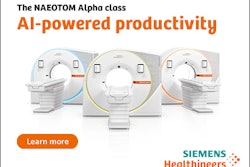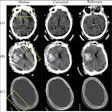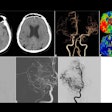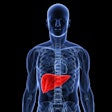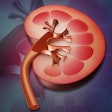Gadolinium-base contrast agents (GBCAs) can be used in aortic stenosis patients being considered for transcatheter aortic valve replacement (TAVR) who are contraindicated for iodinated contrast media, researchers have found.
A team led by Emily Lippincott, MD, from Vanderbilt University found no adverse reactions to GBCAs in eight patients with a history of serious reactions or contraindications to iodinated contrast media. The research was presented July 20 at the annual Society of Cardiovascular Computed Tomography (SCCT) meeting in Washington, DC.
“GBCA-enhanced cardiac CT is a viable alternative strategy for individuals with [aortic stenosis] who have a contraindication to ICM,” the authors wrote.
Although a contrast-enhanced cardiac CT exam is considered to be the standard of care in patients with aortic stenosis being considered for TAVR, those with a major iodinated contrast media contraindication face increased risk of barriers and delays to care given diagnostic imaging limitations, according to the researchers.
However, GBCAs and iodinated contrast media have no allergic cross reactions, the authors noted. What's more, GBCAs have an established safety record in patients with renal impairment.
In their study, the researchers shared their experience with utilizing GBCA instead in patients with aortic stenosis and contraindication to iodinated contrast media. Beginning in November 2022, the research included eight patients with a median age of 78.5. Contraindications to iodinated contrast media included anaphylaxis (3 patients), GFR < 20, not on dialysis (3 patients), laryngeal edema (1 patients), and severe chest pain (1 patient).  GBCA-enhanced cardiac images in a patient with aortic stenosis. Images courtesy of the SCCT.
GBCA-enhanced cardiac images in a patient with aortic stenosis. Images courtesy of the SCCT.
The median dose of the GBCA used in the study (Gadavist, Bayer) was 14.5 ml and no adverse reactions were reported. Furthermore, the median aortic root attenuation was 106 Hounsfield units, and aortic root measurements were obtained in all patients.
Of the eight patients, five received a successful TAVR and procedure suitability is still being assessed in two patients. One patient, however, was found on GBCA-enhanced cardiac CT to have subvalvular stenosis secondary to suspected hypertrophic cardiomyopathy, the team reported.








